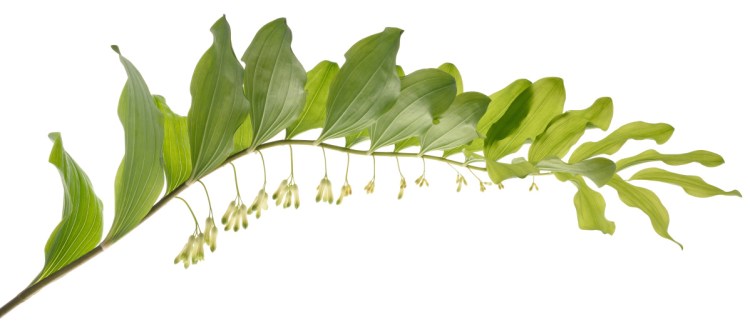Gardens are supposed to do a job. The type of garden you have will depend on the job you want it to do.
If the goal is food production, the answer is a vegetable garden. To help wildlife, the answer is a garden of native plants. But native plants handle specific tasks beyond helping wildlife, Lois Berg Stack, recently retired as a horticulture specialist with the University of Maine Cooperative Extension, said earlier this month.
Stack was speaking at a native plant forum at Coastal Maine Botanical Gardens, sponsored by the Garden Club Federation of Maine. She told the group she was pleased to continue working with them in her retirement.
“Our yard isn’t nature,” Stack explained. “In nature we are intruding. A landscape needs, however, to do what you want it to do.”
Maine is home to 1,600 native plants. Not all are native everywhere in Maine, though. Some grow only on the coast, others only in the mountains. One way to decide which plants will work in your yard is to take a walk in some of the wilder areas around your house and observe, Stack said.
When you get back to your own property, consider what you want the plants to do.
Say you want a ground cover, to control erosion, in a sunny, dry area. One answer is bearberry, a native that has become more popular recently. Although it is technically a shrub, it grows only 6 inches tall, about the same height as turf grass. You can walk on it occasionally, but you wouldn’t want it in a place you would be walking every day – or playing football, Stack said. Its flowers resemble blueberry blossoms, and it produces fruit, which, while edible, is something you wouldn’t eat twice, Stack said.
Creeping juniper works in the same conditions – and goes well with bearberry. The junipers can be as tall as 12 inches, and as short as an inch. Among the roughly 50 cultivars, one of the most popular comes from Acadia and is called “Bar Harbor.” While the juniper is not thick enough to keep some weeds like vetch from coming through, Stack said she pulls it out occasionally and is able to keep it in control.
Juniper and bearberry go well together, with neither overrunning the other, and they look good intermingled.
While these ground covers are more expensive up front than lawn, they involve a lot less labor over the years – in addition to being better for the environment.
Say you have a shady area where you need a ground cover.
One answer is barren false strawberry, or Waldsteinia fragarioides. The leaves look like strawberries, and the plant has yellow flowers. Stack has never seen fruit on hers. The only place it has been found wild in Maine is Kennebec County, Stack said, but it will grow all over the state. It is aggressive – the 12-by-20 foot area Stack has at her home came from one small plant – but is easy to control. It won’t grow in the sun, so it won’t escape to a lawn, and paths also control it.
For trees she recommends red and white oaks, birches and native cherries. “They feed our insects.”
Most homes need some sort of hedge, either along driveways or to separate gardens, and Stack offered multiple plants that would serve that task.
One of the best is winterberry, Ilex verticillata. Known for its bright red berries in December, it also has small flowers in June that support bees. Another shrub that can work as a hedge is beach plum, a free-form plant whose flowers support bees in June and, with cross-pollination, from another beach plum, will produce fruit for jams, Stack said. She also likes black chokeberry, Aronia melanocarpa, which produces a fruit that is high in antioxidants but is quite sour; mix it with sweeter juices if you plan to drink it.
Every landscape needs some understory trees – ones that will grow only about 25 feet tall.
Striped maple, Acer pennsylvanicum, is a gorgeous tree. While my wife Nancy and I have never grown it at home, it grows wild around the family camp in Bethel. It has large leaves and striking green and white bark.
American hornbeam, Carpinus caroliniana, has bright green foliage and turns a tutti-frutti mix of colors in the fall – even the fruits turn color.
Native plants for shade aren’t hard find in Maine, Stack said, because “Maine is a giant forest.”
White baneberry, aka Actaea pachypoda, is a fun plant for the back of the border. It has clusters of small flowers early in the season and then berries, white with a small purple dot, which give it the common name doll’s eyes. Red baneberry is more mounded in form, and has red fruit. I should note, though, that the berries are poisonous.
Solomon’s seal is a striking plant, growing 4 feet tall, with small, pale flowers hanging down from an arching stem. A bonus for many spots: It spreads freely.
Tiarella or foam flower has long-lasting flowers and is another spreading, shade-loving plant.
These are a tiny percentage of the 1,600 native plants in Maine. But it provides a place to start if you want to go native – and why wouldn’t you?
ABOUT THE WRITER
TOM ATWELL is a freelance writer gardening in Cape Elizabeth. He can be contacted at: tomatwell@me.com.
Send questions/comments to the editors.



Comments are no longer available on this story